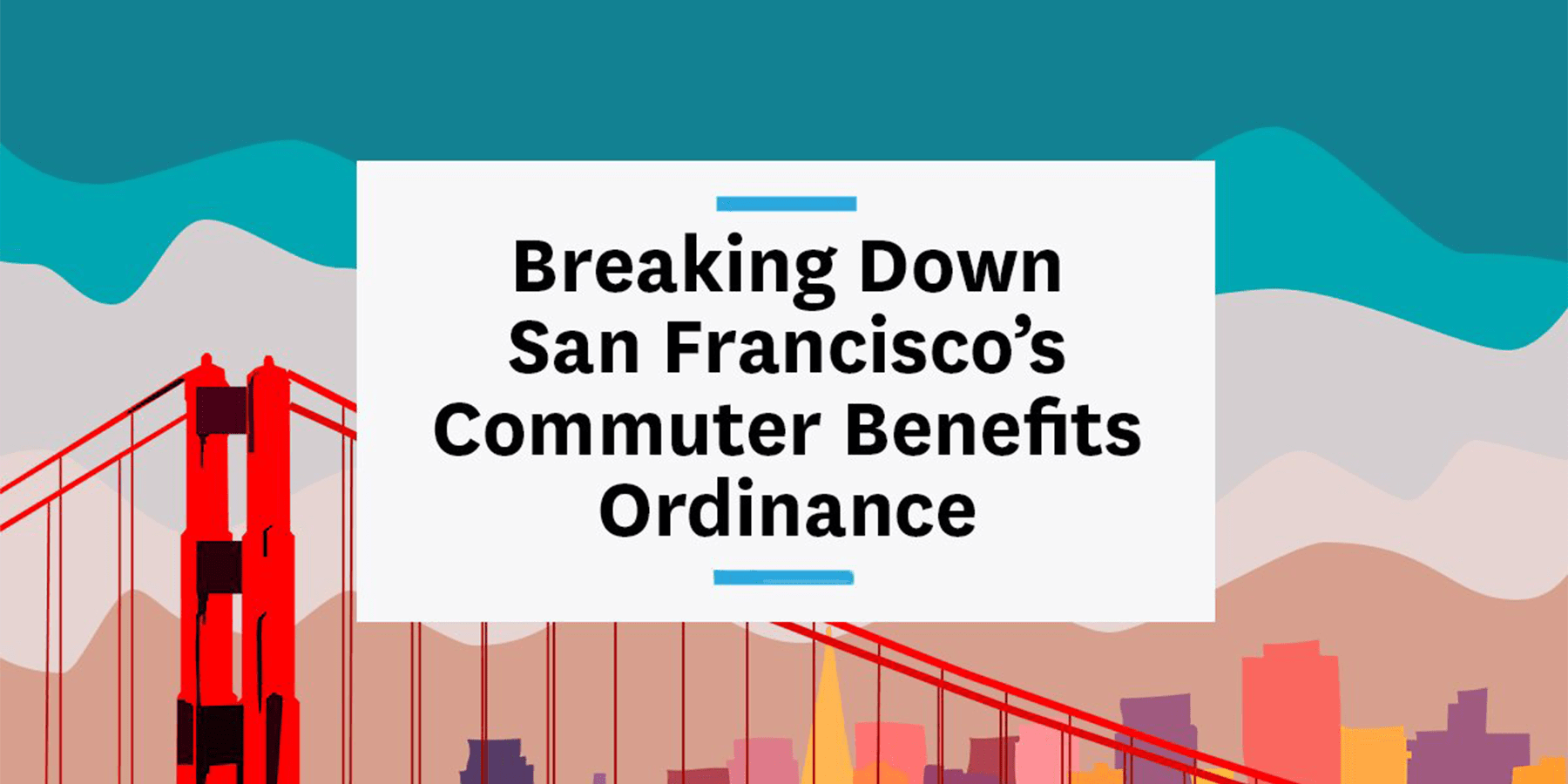Even though San Francisco is a city in its own right, it’s often grouped together with neighboring cities as the larger Bay Area. With commuters traveling in and out of the city, monitoring and limiting traffic is not an easy task. Local and regional governments are working with companies to limit the number of single-occupancy vehicle commutes that are clogging highways throughout the region. That’s where the San Francisco Commuter Benefits Ordinance comes into play.

San Francisco Commuter Benefits Ordinance
The Commuter Benefits Ordinance is enforced by the San Francisco Department of the Environment. This applies to any company with an office in San Francisco’s city limits (doesn’t have to be the company headquarters) and at least one employee working in the city as well as 20 or more employees nationwide. All applicable companies are required to offer a commuter benefits package to employees who work an average of 10 hours per week.
Employer requirements
If the size of your San Francisco Bay Area workforce reaches 50 employees or more, you will have to follow the requirements of the Bay Area Commuter Benefits Program. (Don’t worry, we’ve got all the info you need about that one over here.) For now, let’s dive in to San Francisco proper.
In order to be in compliance with the Commuter Benefits Ordinance, employers must submit the SF Commuter Benefit Compliance Reporting Form. This requires your company’s business account number, your company contact, your company’s location information, total and local employee count, and information about the status of your commuter benefits program. Once this form is submitted, your company is registered and no annual reporting is required.
Commuter benefit offerings
Pre-tax transportation benefits
Starting in 2020, these benefits will allow employees to deduct as much as $270 of pre-tax money per month to put toward commuting costs. The Clipper card, which allows employees directly to manage their commuting money. These funds can be used for fares on some of the most popular forms of transit, including BART, the San Francisco Bay Ferry, Muni (bus and trolley), and more.
Clipper also offers Clipper Direct, which allows employees and employers to add their pre-tax money directly to their card or account that can be used on participating public transit systems.
Employer-paid transportation benefits
This option allows for employers to pay for most, if not all, of any employees commuting costs, up to $98 (the price of the Muni A Pass). If you have a low number of employees working in San Francisco, this could be an added bonus so they don’t have to worry about their commute. Otherwise, it can get a little pricey.
Employer-provided transportation
Paying for a private bus or shuttle going to and from mass transit stations allows for employees to maximize their time on the commute to and from work.
A combination of all of these
If providing just one of these for your San Francisco-based employees doesn’t work, or your company can’t completely subsidize commuting costs, a combination could be a great compromise. If your company can pay for a shuttle two days a week, your employees can save money on those days, while also getting pre-tax money to spend on their commute to the other three days.
City Enforcement
In order to ensure companies comply with the ordinance, there is a series of penalties set by the city to ensure employees are offered commuter benefits.
A written warning is the first act taken against employers, by the city. That’s just the city telling the employer they need to implement a commuter benefits program. If no action is taken after a 90-day period, the city will charge a $100 fine, followed by a $200 fine, and finally a $500 fine.
If that’s not incentive enough, then the chance to miss out or lose current talent should be! Employees are leaving jobs at record rates, and a big factor is their commute. Even if you can’t completely fix your employee commutes, offering benefits can be enough to get them to stay.
What Needs to be Done
Getting employees to change their commuting habits starts with making sure they know what’s available. Incorporating commuter benefits in your new employee onboarding process can create positive commuting habits early in an employee’s tenure with your company. Although not strictly required under the Commuter Benefits Ordinance, how else will your employees take advantage of all the great things you’re offering?
Informing employees of your benefits being offered is a great step, but it is not enough to create a real change in commuting behavior. Taking further measures (like charging employees for parking by the day, rather than by the month, for example) will make them decide on a daily basis if driving is worth the time and money.
All-in-All
Successfully getting every employee to change their commuting habits is a tall order, especially if they’re spread throughout the country. It starts with offering commuter benefits, keeping employees up-to-date on their transit options, and continuously expanding your efforts to end single-occupancy vehicle commutes.




